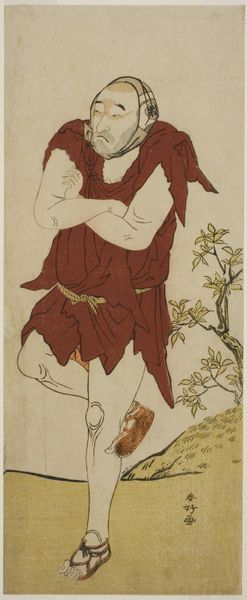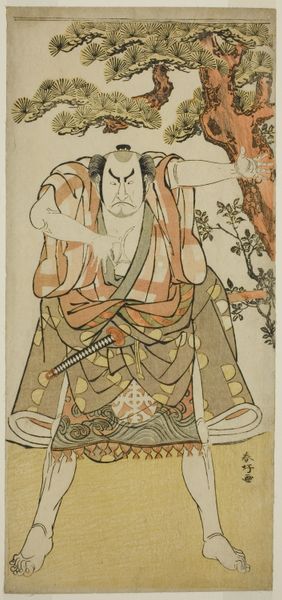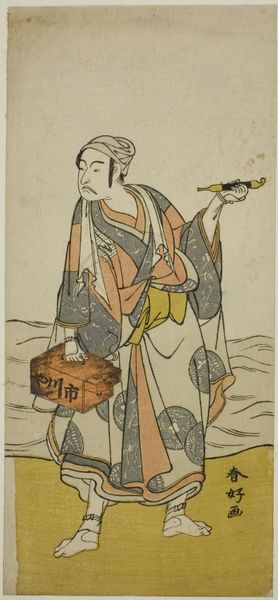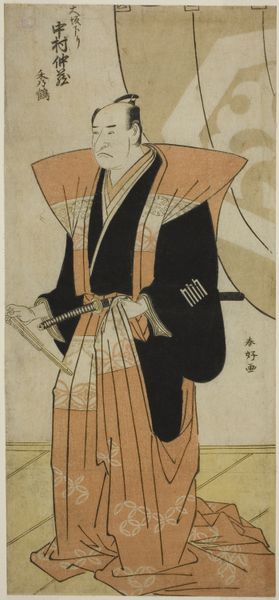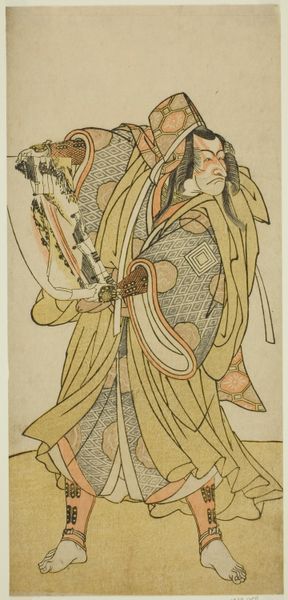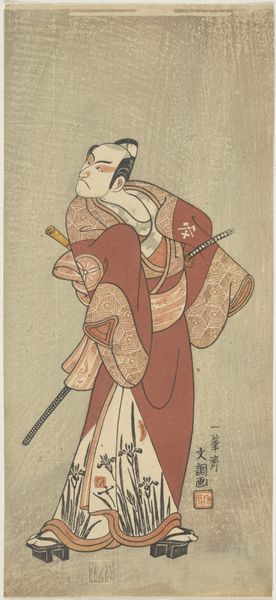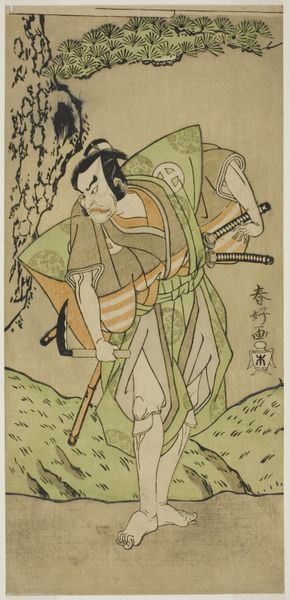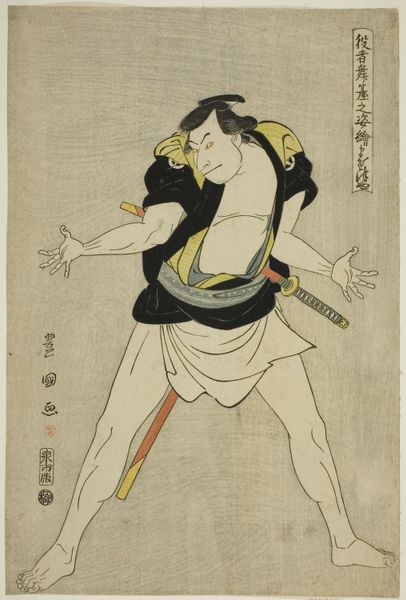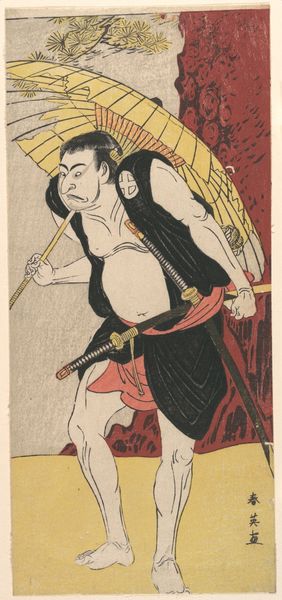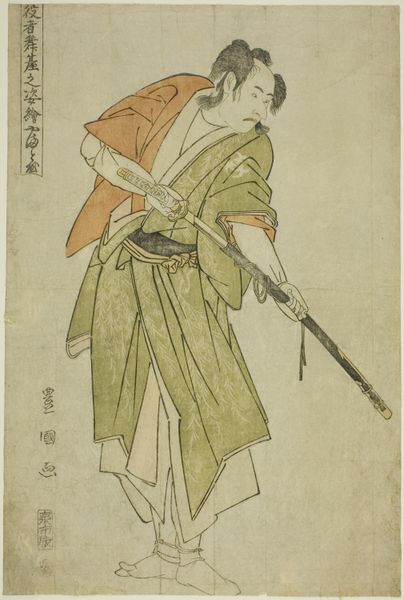
The Actor Onoe Matsusuke I as a Mendicant Monk in the Joruri "Midarezaki Hana no Irogoromo" (Colorful Cloth Profusely Flowered), from Part Two of Act Six of the Play Keisei Ide no Yamabuki (Courtesan: Kerria Roses at Ide) (?), Performed at the Nakamura Theater from the Sixth Day of the Fifth Month, 1787 c. 1787
0:00
0:00
print, woodblock-print
#
portrait
# print
#
asian-art
#
ukiyo-e
#
figuration
#
woodblock-print
#
history-painting
Dimensions: 31.5 × 13.9 cm (12 3/8 × 5 1/2 in.)
Copyright: Public Domain
Editor: This is a woodblock print from around 1787 by Katsukawa Shunko. It depicts the actor Onoe Matsusuke I, playing a mendicant monk. The figure's hunched posture and sorrowful expression give it a melancholic feel. What is your interpretation of this work? Curator: Considering the socio-political climate of the late Edo period, we can see this print functioning beyond just theatrical representation. How might the artist, through depicting a popular actor in a role that arguably evokes hardship, be subtly commenting on societal structures and hierarchies? What kind of access to see these plays might people of different social classes have? Editor: So you're saying the print, through its portrayal of a lower-status character performed by a popular actor, could be a commentary on class differences? Curator: Precisely. The popularity of Kabuki theatre cut across societal lines. It provides a space for the discussion and display of cultural tensions. And prints like these democratized art ownership – think of them as accessible forms of media broadcasting and reinforcing or challenging the established order. Editor: That’s interesting, I hadn't considered that prints were also ways of creating discourse. Are the clothes a symbolic indicator? Curator: Absolutely. The monk's tattered robes can symbolize poverty, atonement, or even resistance. Furthermore, think about who is represented; Onoe Matsusuke I, as a popular actor, carried a certain social weight. By immortalizing him in this particular role, what narratives are reinforced, and which are challenged? How might we see this image through a gendered lens, considering the actor is a male playing a potentially vulnerable, marginalized figure? Editor: Thinking about the layers of performance and representation, from the play itself to the print, is a really powerful way to analyze this image. Thanks! Curator: Indeed, viewing artworks as enmeshed in complex power dynamics allows us to excavate rich narratives beyond the surface image.
Comments
No comments
Be the first to comment and join the conversation on the ultimate creative platform.

